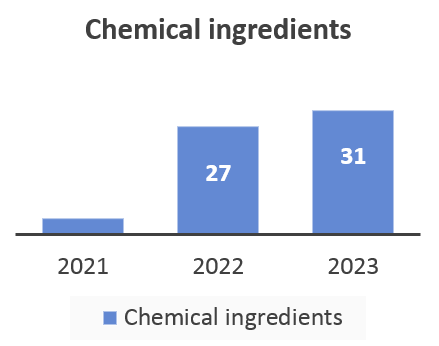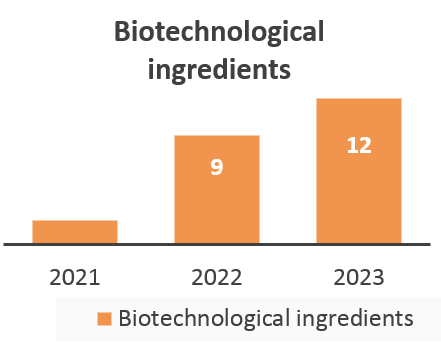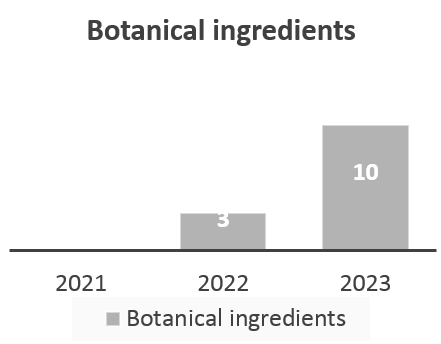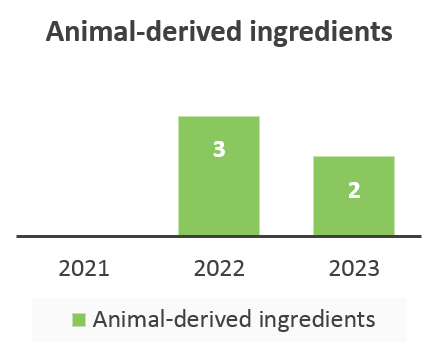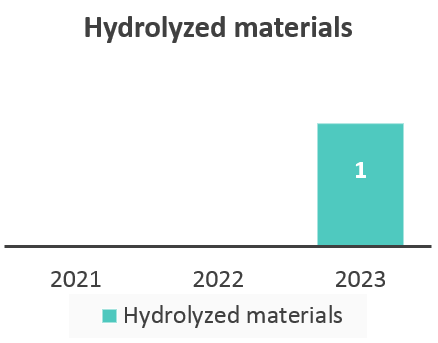Filing Status of New Cosmetic Ingredients in China from 2021-2023
Since the implementation of CSAR, according to data from the National Medical Products Administration (NMPA), as shown in Figure 1, in 2021, 6 new cosmetic ingredients obtained NMPA numbers, of which 4 were for domestically produced new cosmetic ingredients and 2 for imported cosmetic ingredients.
In 2022, 42 new cosmetic ingredients obtained NMPA numbers, with 25 domestically produced and 17 imported.
As of December 15, 2023, 60 new cosmetic ingredients have obtained NMPA numbers, with 46 domestically produced and 14 imported.
In total, 108 new cosmetic ingredients have obtained NMPA numbers, with 75 domestically produced and 33 imported. Overall, the number of filed new ingredients is rising, particularly for domestic ingredients. The number of domestically produced new cosmetic ingredients subject to filing in 2023 has far exceeded the total number for 2022.
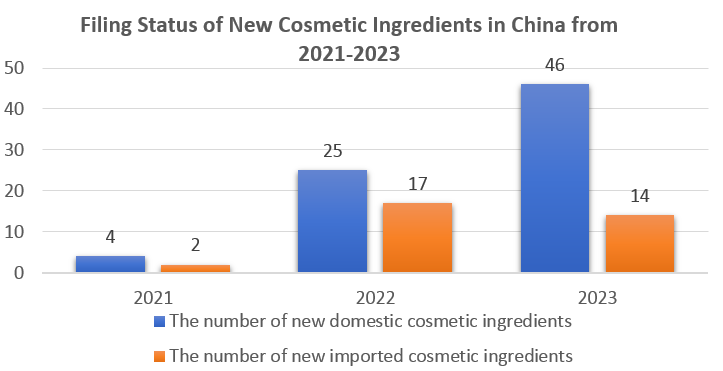
Source of Ingredients
Under the declaration and review system, there are six types of sources of new ingredients, these are:
- chemical ingredients,
- biotechnological ingredients,
- botanical ingredients,
- animal-derived ingredients,
- mineral ingredients, and
- hydrolyzed ingredients.
So far, new ingredients that have obtained filing numbers involve all sources except minerals, as shown in Figure 2. Chemical ingredients (62) dominate the source of ingredients, accounting for approximately 60% of the total, followed by biotechnological ingredients (23), accounting for about 22%.
Moreover, as shown in figures 3 to 7, compared to the new cosmetic ingredients registered in 2021, the sources of new cosmetic ingredients in 2022 and 2023 have become more diverse, with the emergence of botanical ingredients (13), animal-derived ingredients (5), and hydrolyzed ingredients (1), but chemical ingredients and biotechnological ingredients remain the main sources.
In 2022, botanical source ingredients were registered for the first time. In Figure 5, the number of botanical ingredients in 2023 (10) has far exceeded the number in 2022 (3), showing a rapid growth trend, and they all come from domestic production enterprises. Plant extracts generally play roles in skin protection, moisturization, antioxidation, and anti-wrinkling in cosmetics. With the public's recognition of the concept of natural cosmetics, plant extracts have become a popular ingredient.
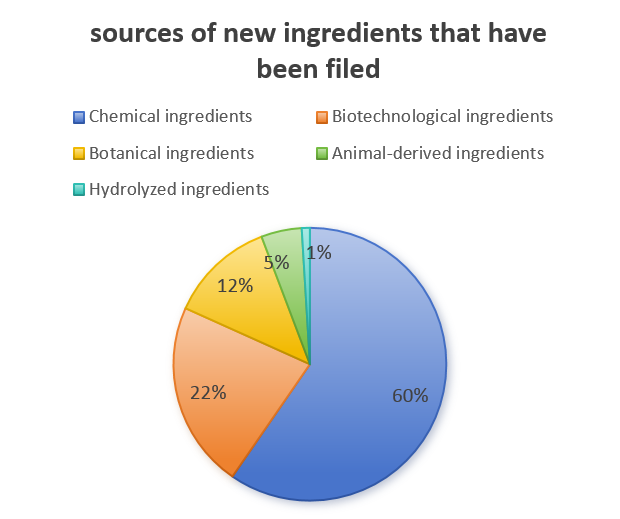
Main Purposes of Use
The purpose of use includes but is not limited to skin protectants, moisturizers, antioxidants, hair conditioning agents, film formers, anti-wrinkle agents, sensory modifiers, thickeners, etc. The purpose of skin protection, moisturization, and antioxidation account for more than half of the new ingredients. Details can be found in the image below. Under the current declaration and review system, there are 67 selectable purposes of use for new ingredients.
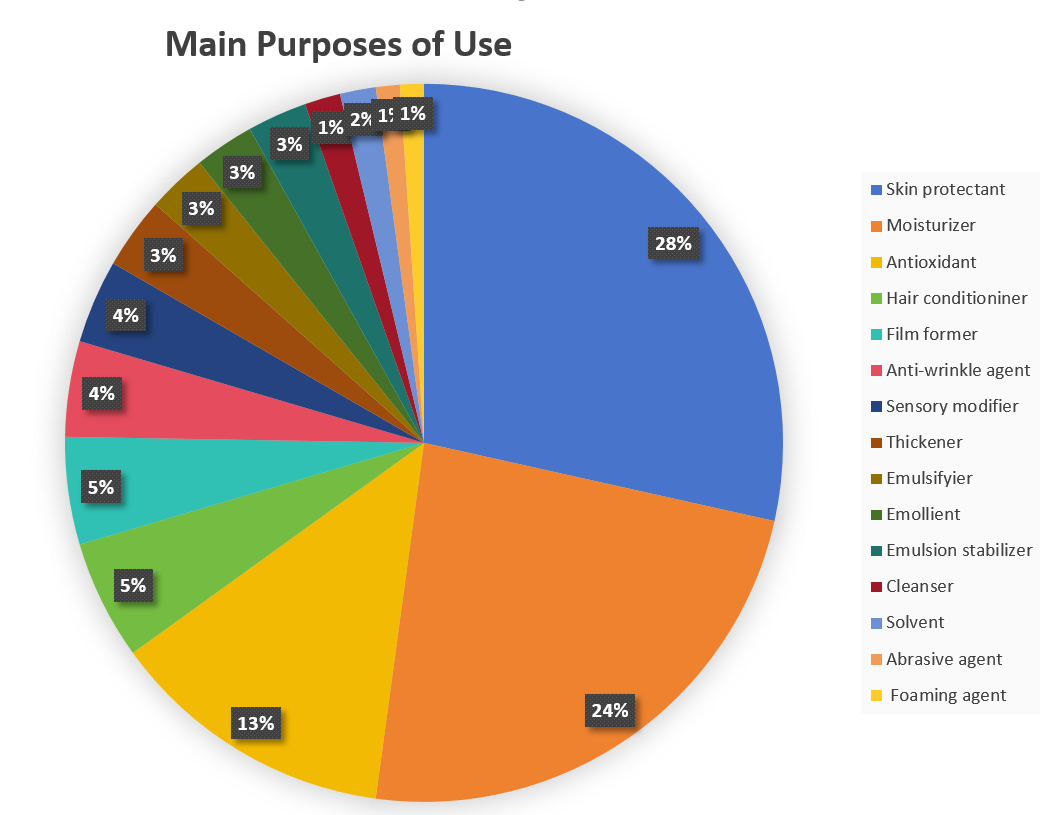
If you need any assistance or have any questions, please get in touch with us via service@cirs-group.com.
